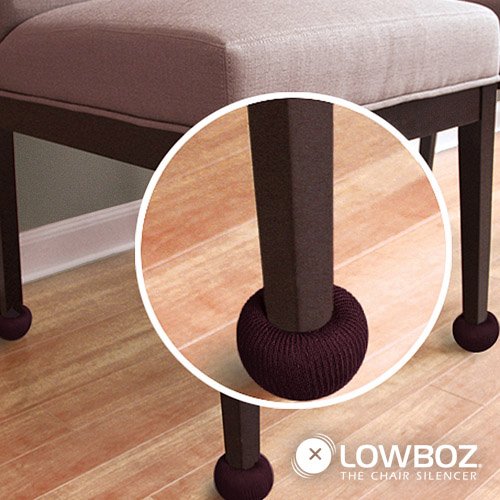Wallace Nutting (1861-1941) is probably best known to the general collecting public for the millions of hand-colored platinotype pictures he sold during the early 20th century. Nutting was also a widely published author, authoring nearly 20 books between 1918 and 1936. His widely renown 10 volume States Beautiful series was surpassed in public recognition by the books that he wrote on his true passion...Early American Antiques. It was the search for attractive and authentic backgrounds for his popular colonial Interior scenes that first started Nutting in his quest for antiques. Over a 16 year period, Nutting published some of the best books ever written on early American Antiques, including American Windsors (1917, the first definitive book ever written on the American Windsor form); Furniture of the Pilgrim Century (1921; revised and enlarged in 1924); The Clock Book (1924), and his most famous book of all...Furniture Treasury (Volumes I & II: 1928; Volume 3: 1933) which was so highly regarded that it can still be purchased in bookstores today.
![]()
Felt Furniture Protectors
It was Nutting's love of antiques that led to his least profitable, but perhaps most important business venture of all: Reproduction Antique Furniture. Even as early as 1915 when many people were just beginning to actively collect American antiques, the finest examples were frequently unobtainable, having already been gathered by wealthy individuals, private collections, or public museums. He was quick to recognize that if he was having difficulty locating certain forms of furniture, so too were other collectors. Many could not afford the finest examples and quite often, those that could afford them simply could not find them. So Nutting decided to reproduce them himself. This article will introduce you to Wallace Nutting's Reproduction Furniture.
Felt Furniture Protectors
Beginning in 1918, just one year after he published American Windsors, Nutting began reproducing Windsor Chairs. Not a craftsman himself, Nutting had his most talented employees take the original chairs apart very carefully and measure each leg, stretcher, spindle, and seat. They would analyze its special features and then reproduce each piece line-for-line, turning-for-turning. Nutting would always try to locate what he felt were the best examples of any form...having the correct height, proportion, shape, and appeal...and combine them into the perfect piece.
Although others were reproducing colonial American furniture during this period, Nutting sought to be the very best. He expended a great amount of time, energy, and money trying to have his reproductions resemble the original as closely as possible. His Furniture Shop used only the best woods available (e.g., his mahogany was imported from the Caribbean), where possible, all work was done by hand ("If the work can be done better by hand, do it that way...If the old method is best, use it"), and his pieces were hand-finished not once, but 5-7 times. Most furniture was finished in a light maple or darker mahogany natural-wood color. Some colored paint washes in black, red, yellow, and green were also available, but rarely used, as few such surviving examples are known today.
The earliest Nutting Furniture from 1918-1922 was marked with a Paper Label (These labels were around 6"w x 4"h, so you won't miss them) which clearly identified the piece as an original Wallace Nutting reproduction (and also served as a form of advertising for his furniture business). These Paper Labels was quite large in size (4"x6") and were placed in an out-of-sight, yet still easy-to-find location (underside of a Windsor seat; inside of a drawer, or back of a case piece). Nutting's reproductions were considered so good that a few unscrupulous individuals were known to remove the Nutting Paper Label, loan the item to a family having many children (to accelerate the aging process), and then sell the reproduction as an original antique. And they usually got away with it. A piece of Nutting furniture was reportedly quietly removed from an exhibition at Winterthur after being identified as a Nutting reproduction.
Between1922-24, Wallace Nutting Furniture was reproduced by another company which had purchased Nutting's business and the right to use his name. The Paper Label was eliminated during this period and the "Script Branded Signature" was introduced. Although furniture marked with the Script Branded Signature is still highly collectable, it's quality was generally not as high as Nutting's earliest (1918-22) and later (1925- 1930's) period reproductions and usually sell for prices lower than the Paper Label and "Block Branded Signature" furniture.
After repurchasing his business back in 1924, Nutting restored his extremely high reproduction standards and began marking his furniture with a "Block Branded Signature". Whereas the Script Branded Signature was in a cursive-style handwriting, the Block Branded Signature was in large individual capital block letters.
Both brand styles were placed in positions similar to the Paper Labels. Nutting wanted his name to be seen and if you have a piece of Wallace Nutting furniture, there will rarely be any question about it. The markings should be quite easy to locate. The only exception to this will be either when the Paper Label was removed, or on a relatively few early 1918-22 pieces, where no Paper Label was capable of being affixed (e.g., on a rush-seated chair). Those pieces where a Paper Label could not be affixed were identified with a Paper Tag attached with a thin wire. Once the Paper Tag was removed, there was no other formal Wallace Nutting identification on the piece. Fortunately, this rarely occurred.
The primary reason for the decline of Wallace Nutting's Furniture business was that it lost money. Nutting's standard for high quality drove production costs prohibitively high and, with the onset of the 1929 Stock Market Crash and the Great Depression of the 1930's, relatively few people could afford a 0 Chest or a 00 Secretary Desk. Although Nutting continued selling from inventory until his death in 1941, for all practical purposes, production of new designs stopped by the early 1930's.
General Furniture Guidelines:
Chairs represent the most common form of Wallace Nutting Furniture, especially Windsor Chairs.
"Case" pieces, i.e., Highboys, Lowboys, Chests of Drawers, Secretary Desks, Blanket Chests, etc, represent the rarest Nutting forms.
The more difficult a piece was to produce, the higher the original cost. And the higher the original cost, the fewer pieces that Nutting produced... and the rarest these are today.
Script Branded Furniture may be worth anywhere from 25 %-35 % less than an identical piece bearing a Paper Label or Block Branded Signature.
Nutting Furniture can generally be dated based upon its markings:
Paper Label: 1918-21
Script Branded Signature: 1921-24
Paper Label and Block Branded Signature: 1925-26
Block Branded Signature only: 1927-1930's
As with all other forms of Antiques, condition is extremely important. Those items in the best condition will bring the best prices. Those showing normal wear will bring less, and those in poor or damaged condition will be the least desirable pieces.
Many still consider the Wallace Nutting furniture market to be undervalued today. We sold a Nutting Goddard Tall Case Clock at Auction for ,000, a Savory Highboy for ,000, and are aware of a Goddard Secretary Desk that reportedly sold for more than ,000. Yet based upon the high quality, limited number of pieces, the wide recognition of the Wallace Nutting name, and the fact that no more Nutting Furniture will ever be produced, many people consider the Nutting furniture market to be undervalued in the long term.
Although we have not yet seen any attempt to reproduce Wallace Nutting Furniture, we have seen a limited amount of "fake" Wallace Nutting Furniture. By ''fake'' we mean that we have seen several pieces of original antique furniture with a Block Branded Signature on it. Apparently someone created a "Wallace Nutting" block branding iron, and branded the Wallace Nutting name onto several older pieces of furniture, thereby attempting to increase its value. This has been a very limited problem. It occurred about 10-15 years ago, we have seen no other "fake" Nutting furniture since, and should not be of any major concern to collectors. We have never seen a fake Paper Label.
The best protection against this form of thievery is to obtain a copy of the Wallace Nutting General Catalog, Supreme Edition mentioned below. This will do two things:
o It will provide an excellent visual reference for the piece in question.
o It will provide sizing information.
Each piece of Nutting furniture was produced to exact specifications. A #326 Windsor Side Chair should look exactly like, and be of the exact same dimensions, as the #326 Windsor Chair shown in the Catalog. Any change in dimensions or features should suggest that the piece has either been altered, or could be a fake.
Reference Books Available:
The Collectors Guide to Wallace Nutting Furniture, by Michael Ivankovich, 176 pages, illustrated, with pricing information (2004)
The Guide to Wallace Nutting Furniture, by Michael Ivankovich, 152 pages, illustrated (1990)
Wallace Nutting General Catalog, Supreme Edition, by Wallace Nutting, 160 pages, illustrated. This is a reprint of Nutting's 1930 Furniture Sales Catalog and is the best visual-reference book of Wallace Nutting reproduction furniture in print today.
Wallace Nutting: A Great American Idea, by Wallace Nutting, 40 pages, illustrated. This is a reprint of the 1922 Wallace Nutting "Script" Furniture Catalog. This visually shows all Wallace Nutting furniture that was reproduced using the Script Branded Signature.
Wallace Nutting's Windsors: Correct Windsor Furniture, by Wallace Nutting, 60 pages, illustrated with excellent background information on Nutting's reproduction techniques. This is a reprint of Nutting's 1918 first Paper Label Furniture Catalog.
![]()
Wallace Nutting Furniture
Felt Furniture Protectors
Oct 22, 2011 05:28:28

Click for larger image and other views
 >> Click here to update Cheapest prices for FELT PAD 3/4IN 60 PCS VALUE PACK <<
>> Click here to update Cheapest prices for FELT PAD 3/4IN 60 PCS VALUE PACK <<
FELT PAD 3/4IN 60 PCS VALUE PACK Feature
- Adhesive Backing
- Easy to peel and stick
- High Quality
- Protects floors from scraping
- 60 Pieces - 3/4 inch Diameter
FELT PAD 3/4IN 60 PCS VALUE PACK Overview
60 Pieces - 3/4 inch Diameter.Protect your surfaces with our non-abrasive Felt Pads. Self-adhesive and easy to use. Mount heavy duty felt protection pads on the bottom of any object and shield floor, countertop and furniture surfaces from scratches and blemishes.Place behind picture frames to keep leveraged. Position on doorknobs to prevent the scratching of walls, reduce noise and eliminate vibration.100% polyester felt pads protect all hardwood floors, furniture, walls and equipment from scratches and nicks.
SAVE NOW on the special offers below!
Available In Stock. |
| This FELT PAD 3/4IN 60 PCS VALUE PACK ships for FREE with Super Saver Shipping. |
|

Limited Offer Today!! FELT PAD 3/4IN 60 PCS VALUE PACK Black Friday and Cyber Monday Deals
Sealy Mattress Posturepedic













